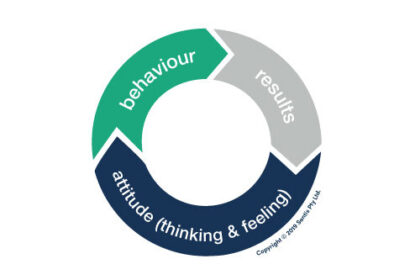The importance of tracking your safety culture and climate
Just as a routine health check-up safeguards your wellbeing, continual assessments of your safety culture and climate play an equally critical role in ensuring a thriving and secure workplace.
These evaluations provide a looking glass into the collective beliefs, values and perceptions about safety within your organisation. Without keeping up to date, it’s difficult to have an in-depth understanding of how your safety culture and climate is improving, including what challenges you may need to address.
For a safe and productive workplace, regular safety culture and climate assessments are vital. To learn more about what they measure and why they’re integral to the sustained health of your organisation, keep reading.
What do safety culture and safety climate assessments measure?
Safety culture embodies an organisation’s collective beliefs, norms and values about safety. Your safety culture is also related to safety performance and the likelihood of incidents at your workplace. Culture is deeply held and uniquely ingrained in every organisation.
This makes a qualitative assessment the best method for obtaining a realistic overview of a company’s inner workings. To reduce the potential for bias, this is often achieved with expert third-party analysis.
Similarly, safety climate reflects employees’ shared perceptions of how safety is valued in an organisation, providing a momentary snapshot of the underlying safety culture. Climate can be accurately measured using surveys (quantitative methods).
Combining both assessments offers deeper insights into the workplace mechanisms fundamental to safety, providing organisations with detailed results they can feel confident in.
5 reasons why repeat diagnostics are integral for your organisation’s health
1. You can use your safety climate and culture results to predict safety outcomes
A mature safety culture is positively correlated with effective safety behaviour and can be used as a leading indicator for predicting safety outcomes in your organisation. Safety culture is related to behaviour, decision making, reporting incidents and near misses, turnover intentions and engagement. [1]
Every level of leadership in your organisation, from the board down, should be focused on building and maintaining a positive safety culture. By tracking climate and culture you can have a clear line of sight for how safety is progressing in your organisation.
2. You can quickly identify areas of improvement in your organisation
As an organisation evolves, so do its challenges and opportunities. Repeating safety culture assessments helps in identifying emerging areas of improvement and potential opportunities for growth. Filtering results to team or site level can demonstrate pockets of positive safety climate where strengths can be leveraged.
Once the opportunity areas have been identified, energy and resources can be strategically directed to those needs. This ensures a more targeted and effective approach. Staying proactive in addressing these aspects is key to maintaining a robust and resilient safety culture.
3. You can gauge if culture changes have reached the frontline
Any safety initiative requires positive communication and strong strategic focus. A repeated assessment helps gauge whether the changes and improvements initiated at the organisational level have effectively shifted the experience of frontline workers.
Exploring changes in departments and sites ensures that the intended safety measures are implemented and followed at every level of the organisation. This minimises the gap between strategy and execution.
4. You can get a clear picture of your ROI (return on investment)
Like most things in business, investing in improving your company’s safety culture needs to be justified with measurable results. The improvement in employee wellbeing, reporting and safety behaviour can be measured through repeated assessments.
By supplying this data, those outside the safety sphere can better understand the effectiveness of safety initiatives. This can also help decide whether initiatives are a worthwhile investment for the company and where adjustments or additional training may be needed.
Regular safety culture assessments offer a timeline of an organisation’s safety journey. By comparing results over time, you can effectively demonstrate the progress and evolution of your safety culture.
This evidence of change is crucial for internal and external stakeholders: it keeps employees and the board updated and demonstrates your organisation’s commitment to continuous improvement.
5. You can reenergise your organisation’s safety focus
Regularly seeking input from your workforce on safety and safety culture can reenergise an organisation’s commitment to safety. Maintaining the focus on safety initiatives, reminding your employees of the importance of safety and encouraging active participation in fostering a culture of positive safety in your workplace.
How often should your organisation repeat their culture and climate assessments?
Assessments give you a bird’s eye view of what safety in your organisation is really like; unearthing perceptions you may otherwise be blind to. Data tells a story and to keep the story going, you need to consistently monitor safety culture shifts.
This is why we recommend starting with a combined assessment of safety climate and culture with our Safety Climate Survey (SCS) and Onsite Safety Evaluation (OSE). Following this, we recommend conducting a SCS every 12-18 months.
The purpose of the survey is to determine the critical factors contributing to the overall safety climate within your organisation. Our survey determines this by analysing widespread behaviour, attitudes and perceptions.
Safety culture is slower to change so we recommend returning to an OSE every three years. This provides a comprehensive understanding of the overall health of your organisation’s safety culture. An OSE collects meaningful, qualitative data through interviews, focus groups and observations and assesses cultural maturity across 24 dimensions.
To stay on top of changes between these assessments, and to evaluate initiatives as they are underway, we recommend our shorter Pulse Survey every six months.
This keeps a close eye on the safety climate in your organisation, allowing you to address any emerging concerns as soon as possible. A pulse survey takes a more targeted approach, allowing you to focus on measuring the safety dimensions your organisation is most interested in learning about.
Are you ready to improve your safety culture? Learn more about our assessments here.
[1] Christian, M. S., Bradley, J. C., Wallace, J. C., & Burke, M. J. (2009). Workplace safety: a meta-analysis of the roles of person and situation factors. Journal of applied psychology, 94(5), 1103; Clarke, S. (2006). The relationship between safety climate and safety performance: a meta-analytic review. Journal of occupational health psychology, 11(4), 315.




